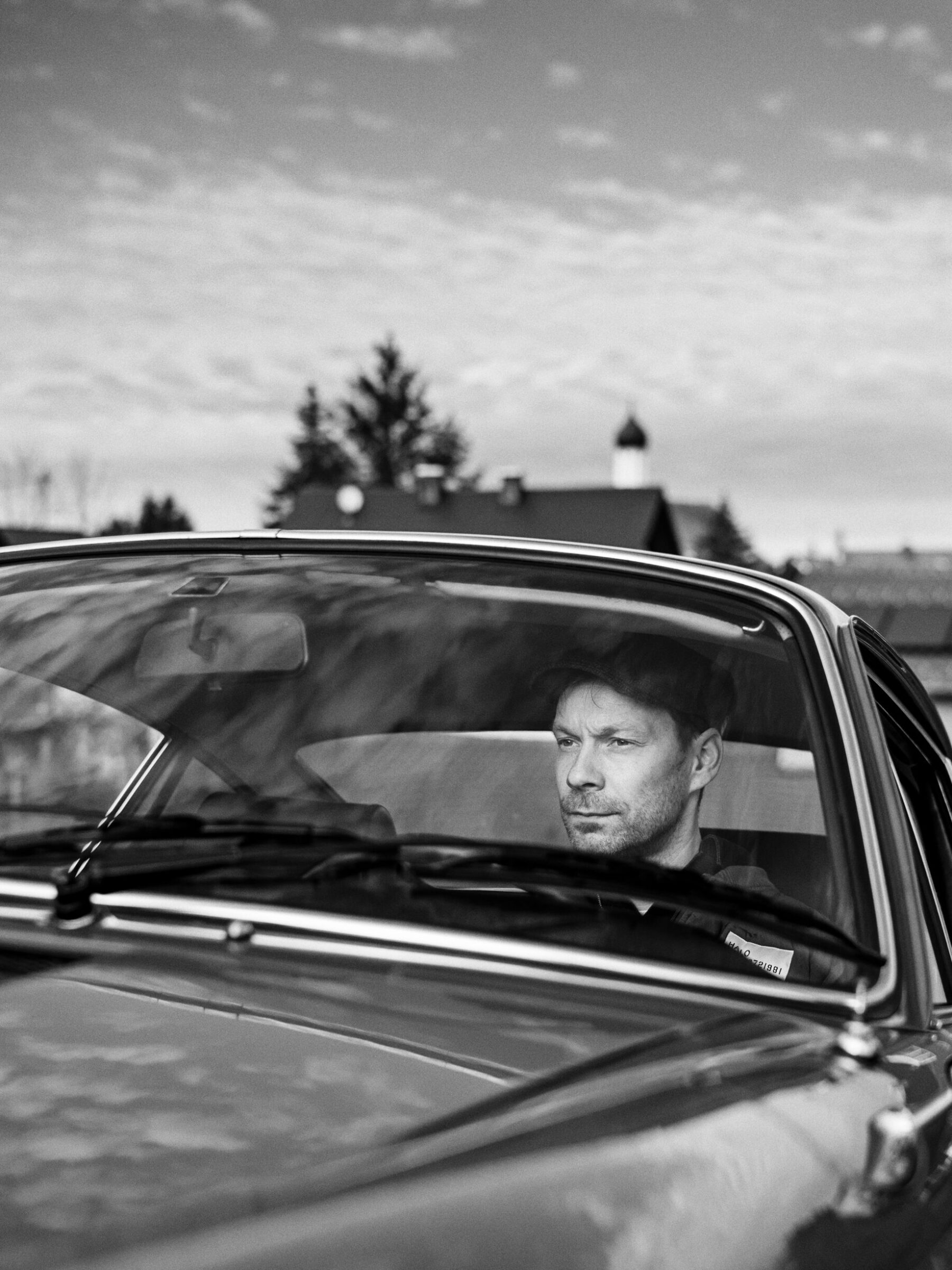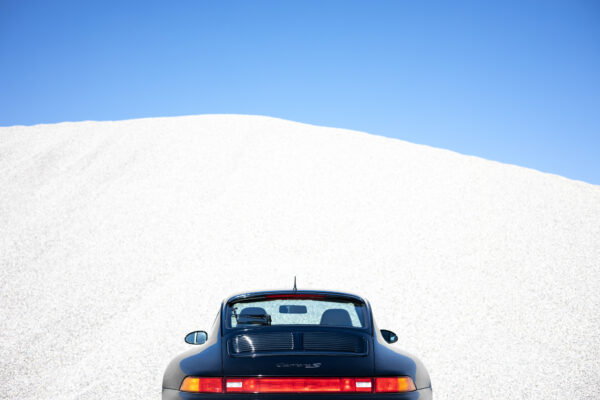Classic cars as an investment – These cars really increase in value.
Many people are fascinated by high-quality classic Porsche models. Anyone who wants to understand this fascination can hardly avoid talking to Michael Schnabl. His 1000 square metre “Speedloft” showroom in Utting am Ammersee is one of the top addresses in Germany when it comes to luxury Porsche classic cars and collector’s models.
In view of inflation and global economic crises, they are becoming increasingly attractive as an investment. Michael Schnabl provides some insights into the topic.
SC: What do I need to bear in mind if I want to invest in a classic Porsche?
MS: If you want to invest your money in one or more classic cars, you should be aware of some important basic conditions. Firstly: The market is confusing and requires a trustworthy partner and specialised knowledge. Vehicles are offered by dealers and private customers on a variety of platforms, where there is usually no way of verifying the actual condition. You should always ask for a warranty and demand reliable expert reports and technical inspections, as well as a comprehensible history. Accident vehicles, falsified speedometer readings and poorly maintained vehicles are often not recognisable at second glance and require experience. Reimports are also often not comparable with vehicles delivered in Germany. This means that the supposedly cheap classic can often turn into a penny grave.
SC: Which models are currently particularly worthwhile?
MS: The price for a normal 911 from the 964 model series, which was built from 1989 onwards, is currently significantly higher than the former purchase price, provided it is a vehicle in collectable condition. There are nowhere near as many of the last air-cooled models from the 964 and 993 series available as are in demand. The reason for this is that the 964 model in particular is used for many tuning and conversion projects. Triggered by the American tuner “Singer”, many suppliers are currently trying to restore these models to the old 70s look combined with the latest technology. Personally, I don’t think much of it. A few years ago, restoration objects and accident vehicles were still being used. Today, many good vehicles are taken off the market for these so-called ‘restomods’ or ‘backdates’ and their originality is irrevocably destroyed.

SC: What is currently influencing the market? What changes are there?
MS: Demand is also growing worldwide and is also driving up prices. Especially in the USA and countries in Asia, rare and high-quality Porsches are a status symbol. In addition, many classic vehicles can now be delivered to these countries, as they can be imported without any problems from an age of 25 years.
Then there is social media. Television star Jay Leno alone owns 169 vehicles and willingly shows them off. Jerry Seinfeld is known to have received the last air-cooled 911 in 1998 and has his own programme in which he presents his vehicles. The 993 Carrera 4S model also has part of its fame because stars such as the Kardashians and Beckhams can be seen behind the wheel via Instagram and co. It is the last air-cooled model with a wide turbo body and no wings. The last list price was around 100,000 marks. It now fetches well over 100,000 euros in good condition.
SC: At what price range should Porsche enthusiasts start investing? When do we start talking about a worthwhile investment?
MS: There are classic Porsche 911s, for example, starting at 50,000 euros, which can retain their value with good care. Real collector’s items, on the other hand, only start at 100,000 euros. You should generally have your classic car serviced regularly, which can cost several thousand euros, and the maintenance costs should be in proportion to the investment.
The most expensive Porsche in the world is currently the 917K from the film “Le Mans”. It has achieved a value of over 14 million euros.
SC: But surely the price is not the yardstick by which I recognise whether the purchase is worthwhile or not?
MS: In any case, it is advisable to find a “sparring partner from the trade”. This could be a mechanic or expert who can help to detect forgeries, uncover damage or recognise whether the parts come from the manufacturer and ideally from the period in which the car was built. As with watches, the more original the better when it comes to old vehicles. Ideally, it is nice if the collector’s item is delivered with all the papers and a traceable history and has never left Germany. The greatest asset is a body that is still completely preserved in its first original paintwork, as well as a complete history with only a few previous owners.
SC: So the risk of making a bad purchase is high for the layman without expert advice?
MS: An illustrative example of this is the development of the Entenbürzel: the ‘Entenbürzel’ Porsche 911 2.7 Carrera RS from 1973 has become increasingly sought-after in recent years. Suddenly, many high-end collectors wanted this model, but the number of units was limited. Today, there are said to be twice as many of this model on the roads as originally. The risk of coming across a fake model is correspondingly high.

The risk of coming across a fake model is correspondingly high.
SC: What are the current price drivers?
MS: Some Porsche models were produced in very small numbers, some of which, like the narrow Speedster from 1989, were not even intended to be launched on the market. Only 161 were produced. This fact increases the collector’s value. Well-maintained models go for considerably more than a normal turbo-wide Speedster.
There are also trends that determine the price. Certain colours are currently in particularly high demand, such as star ruby, speed yellow or riviera blue. Collectors pay high premiums for green, the Porsche family’s favourite colour. Most of the owner family’s vehicles were used in this colour and some were even repainted afterwards. The so-called PTS colours, which stands for “Paint to Sample”, are special colours that were only produced in small numbers as one-offs in the exclusive manufactory.
In general, however, the more original, the fewer kilometres and the better documented, the more expensive and the more stable in value.
SC: How much depreciation do I have if I want to drive my collector’s Porsche?
MS: The highest return on investment should always be the driving itself. Because if you want to drive a luxurious 911, you should also show it off. On the other hand, signs of use can reduce the value of a classic Porsche. So drive the car as you would a rare watch. You should also feel comfortable with the car in public. It’s not a nice feeling if you’re constantly worried about damage or have to constantly check whether the car is still there, because the damage or loss would hurt a lot financially. On the other hand, the vehicles are also built to be driven.
“The highest return on investment should always be the driving itself. Because if you want to drive a luxurious 911, you should also show it off.”

SC: How do I minimise the risk of potentially driving my investment into the wall?
MS: All-risk insurance can help you to be covered in the event of a claim. Not only comprehensive damage is covered, but also technical damage such as engine damage. This special insurance is offered by certain insurers. Some dealers also take out this insurance for their customers when they purchase a vehicle. In any case, sufficient insurance should be in place to cover the current value and the car should be kept protected accordingly.
SC: What do I generally have to be prepared for in terms of price?
MS: Despite the correction for some models, the price level in the market as a whole is still significantly higher than before the pandemic. But prices will certainly rise again. Big jumps are still possible, especially for some younger models such as the 996 and 997, but the 964, 993 and G models will also continue to develop. A stable increase of five to ten per cent per year will continue in the overall market in the future, so now is a good time to get in.


SC: What insider tip do you have when it comes to Porsche as an investment? Where can I perhaps get a really good deal?
MS: The successor to the “duck-tail” 911 2.7 Carrera from the so-called G model series from 1974 is still an undervalued classic compared to the original, which has almost the same performance with the identical engine. The relatively young 996 and 997 model series have also proven themselves with reliable technology and qualities suitable for everyday use.
In general, you should keep an eye on this: Due to the phasing out of the combustion engine, the next 10-15 years will also be a renaissance for these vehicles and will provide a further boost, as many enthusiasts and collectors still want to secure a vehicle with classic technology. And the past shows that everything that is no longer available also tends to become sustainable.
Click here to get to the website of Motorlegenden
Photos: Lorenzo Kikisch





